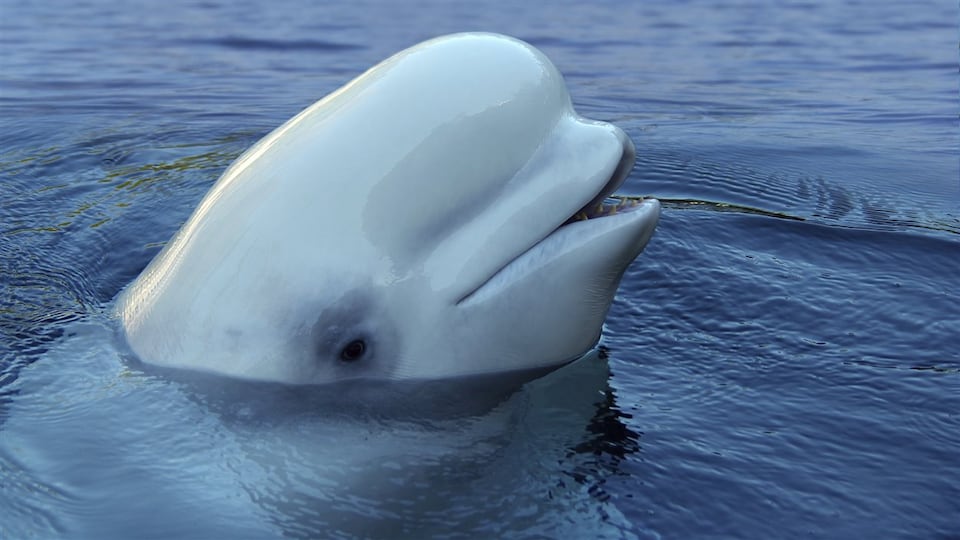Sa The conquest of the belugaa theatrical reading presented at the Festival TransAmériques (FTA) in Montreal, Gaspé multidisciplinary artist Maryse Goudreau wants us to reflect on our relationship to living things by using the example of the beluga, a species that has been abused in long time.
To do so, he reviewed more than 150 years of debates in the House of Commons of Canada to highlight excerpts of speeches held there on the subject of marine mammals.
The show was in the form of a reading of these statements by parliamentarians by five interpreters from Gaspésie, accompanied by sound recordings of beluga whale voices captured underwater. The excerpts are carefully combined to form the dramaturgy of the work.
Presented last year on the waterfront in Carleton-sur-Mer, in Chaleur Bay, it travels along the coast of St. Louis. Lawrence River, on the Quai de l’Horloge, in Montreal, from 3 to 5 June.
The advancement of ecological thinking
Maryse Goudreau explained into the microphone of Pénélope McQuade what the origin of her creation was, which she had been working on for almost 10 years. I came across stories of the 1920s bombing of beluga whales in Kamouraska. […] I was shocked. At the time, the species was considered a nuisance to the fishing industry, and it was accused of damaging fish stocks consumed by humans.
Through discussions in the House of Commons, Maryse Goudreau discovered how our relationship with the beluga has now become a protected species.
At first we actually had a very mercantile outlook on life, then at one point we started to protect it, and it happens that this is when women start to get elected, explains the artist who says to subscribe to a ecofeminist approach. It looks unusual.
Inspired by Cacouna
The legend surrounding the construction of an oil terminal in Cacouna, in Bas-Saint-Laurent, which was opposed by environmentalists and citizens for fear of the negative impact on belugas, also inspired Maryse Goudreau. The project was eventually abandoned.
Citizens created an image that really captured the imagination. We started protecting what we call the “nursery” of beluga whalesa place where many mothers go to give birth to calves.
It’s hard to make it visible in sight, so I gave myself the mandate to make this place truly exist through art.
In the play, we discuss, for example, the advent of species protection regimes as well as legislation aimed at ending the captivity of whales and dolphins in Canada.
The voice of beluga in the background
Behind the sound of interpreters repeating the words of parliamentarians, The conquest of the beluga is accompanied by the sounds of the beluga.
These recordings were made while diving with animals near Churchill, in northern Manitoba, where the beluga population is not at risk like St. Louis. Lawrence beluga.
It is very, very protected [fleuve] Saint-Laurent so we don’t disturb the beluga that are thereexplanation by Maryse Goudreau to justify the fact of going to record the sounds of beluga outside Quebec.
Fans of the performing arts will hear the voices of parliamentarians and beluga whales in three performances of The conquest of the beluga June 3, 4 and 5 in Montreal. Tickets are sold online.
Maryse Goudreau also showcases an immersive sound and tactile experience, In the belly of the whale, as part of the FTA. Someone at every opportunity will experience it thanks to a listening station where they can dive into a beluga whale nursery.
This text was written from from an interview by Pénélope McQuadehost the show Penelope. Comments can be edited for clarity and brevity.
Source: Radio-Canada
